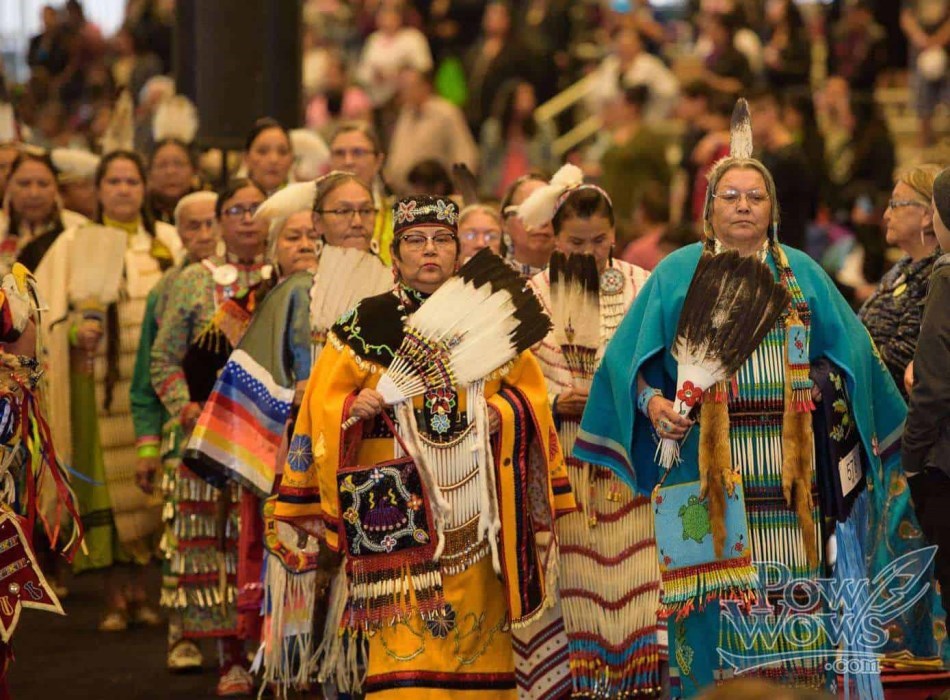Recently, a Native American pow wow came to mean a meeting between Native Americans and non-Native Americans which would include dancing, singing, and socializing. A Native American pow wow can vary in length from hours to days. Major pow wows usually last about a week long.
.jpg)
Pow wows are not sudden events. Planning a pow wow may take months or even a year in time. There are many people involved in the planning of a Native American pow wow. Usually there is a sponsor of the pow wow. This may be an Indian tribe, a local college, or an organization. From that, a committee is formed to designate certain positions.
.jpg)
Native American pow wows are usually set up in a series of circles, with the large center circle being known as the dance arena. The dance arena is also where the master of ceremony has his table as well as where the drum groups sit. Outside the dance arena are circles used as a sitting area for spectators and an area for booths for vendors selling food or arts and crafts.
The term powwow is the white man’s version of the Indian word “pau-wau” which originally stood for a healing ceremony conducted by the spiritual or religious leaders of various tribes. When the white man started settling around Native American lands, they witnessed these powwows. Soon, the “powwow” term referred to any type of Indian gathering, regarding of its purpose.
.jpg)
.jpg)
How the powwow got its exact start is not known, but it was thought to have originated with the Pawnee tribe as a religious ceremonial meeting, filled with dancing and other rituals. Other Indian tribes adopted the practice of the powwow and added their own traditions. Indians held these ceremonies to celebrate a successful hunt and to thanks the spirits for a bountiful harvest. Powwows also spiritually prepared a warrior for an impending battle.
Native Americans were big believers in all things living and spiritual and viewed life and death as an inevitable circle. Some of the powwow ceremonies they conducted celebrated this circle with tribal drums, dancing, food, chanting and traditional healing rituals. They acted out ancient stories handed through the generations, which kept their history alive.
.jpg)
.jpg)
Today, the powwow tradition is still alive. Usually centered on the changing seasons, you can find powwow ceremonies located near areas with a large concentration of Native American tribes. In addition, there are some powwows that travel around the country providing educational lessons of the Native American culture. More of a festival-type of feel today, the powwow has the traditional dances as well as various religious ceremonies re-enacted for the general public. In addition, you can find Native American arts and crafts as well as food items and other wares for sale.
.jpg)
According to indians.org








